
Shopify vs WooCommerce SEO: Which Platform Gives You the Edge in 2025?
Shopify vs WooCommerce SEO isn’t just a technical debate but a strategic decision that directly affects how customers find (and trust) your store. If you’re serious about organic growth in 2025, choosing the right platform for SEO can give you a lasting competitive edge or quietly hold you back as your competitors rise in the rankings.
In this guide, we break down how each platform stacks up across the SEO factors that actually move the needle:
- Speed and performance that influence your rankings
- Technical SEO control, like metadata, URLs, and schema
- Content and blogging capabilities for building authority
- Apps, plugins, and tools that expand your SEO stack
- Real cost of optimizing on each platform over time
Let’s get into it.
Quick Verdict on Shopify vs WooCommerce SEO
If you’re looking for a straight answer, here it is: Shopify is faster to launch and easier to manage, making it a solid choice for most store owners. But if you’re building a content-driven brand and want deep control over technical SEO, WooCommerce offers more flexibility, as long as you’re comfortable with the added complexity.
Shopify SEO: pros & cons
Pros
- Built-in SEO essentials like sitemaps, mobile optimization, and SSL
- Clean URL structure and automatic canonical tags
- User-friendly interface, no need to touch code
- Fast, reliable hosting helps with page speed and uptime
Cons
- Limited control over advanced technical SEO elements
- Blog functionality is basic compared to WordPress
- SEO apps can add to monthly costs
WooCommerce SEO: pos & cons
Pros
- Full control over metadata, URL structure, schema, and more
- Industry-leading SEO plugins like Yoast or Rank Math
- Powerful blogging engine built on WordPress
- Ideal for content-heavy or authority-building strategies
Cons
- Requires more technical know-how to set up and optimize
- Hosting and plugin quality directly impact performance
- Higher risk of plugin conflicts or bloat if unmanaged
Ultimately, the best platform depends on your SEO priorities, internal resources, and long-term growth strategy. Let’s break down each factor in more detail.
Shopify vs WooCommerce SEO Performance
Quick verdict: Shopify wins for SEO performance because it’s fast, secure, and optimized without much technical setup, while WooCommerce requires more effort to match that level.
1. Speed & uptime
Shopify is fast with no setup required. Hosting, CDN, caching, and image optimization are all built into the platform, so most stores see strong performance without touching code or configuring plugins. This is one of Shopify’s clearest SEO advantages.
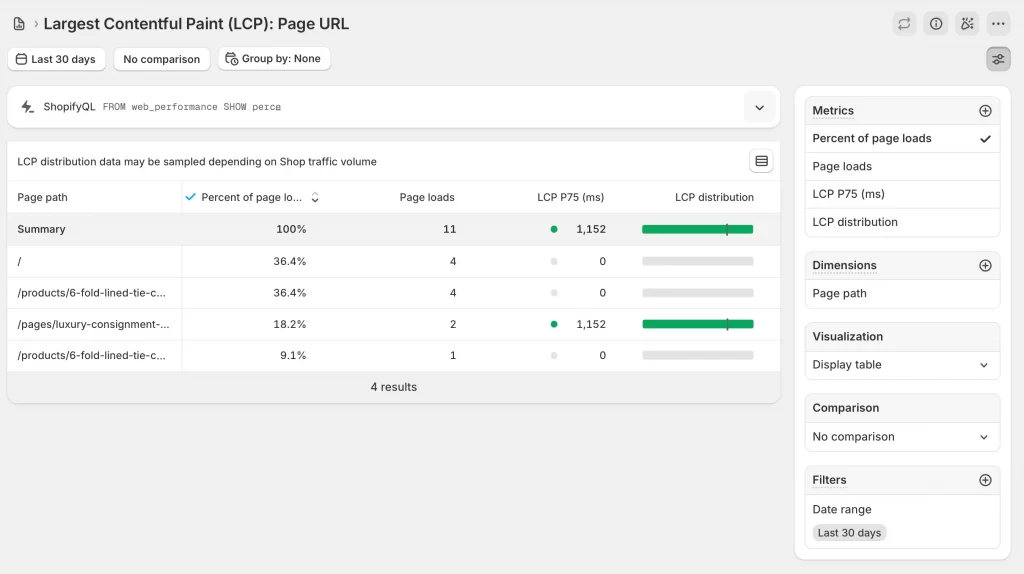
WooCommerce, by contrast, puts everything in your hands. You can get excellent speed, even better than Shopify in some cases but only if you know how to optimize your hosting environment, choose a lean theme, and configure tools like WP Rocket or LiteSpeed.
From LitOS’ perspective, Shopify wins here for most businesses. WooCommerce has raw potential, but Shopify gives you consistent performance without gambling on dev resources.
Relevant article: How to Improve Shopify Speed Score.
2. Mobile optimization
Mobile performance is built into how Shopify thinks. Themes are responsive by default, and you can preview mobile UX inside the editor with no extra tools or plugins required. That said, the level of control is limited. If you need fine-grain adjustments to mobile layout or loading behavior, Shopify’s locked-down structure might feel rather restrictive.
In 2025, Shopify introduced the Horizon theme foundation, built specifically for speed, clean code, and mobile-first design. Combined with smarter asset loading (CDN, CSS/JS bundles), these improvements give most stores a strong head start in meeting Google’s Core Web Vitals requirements. According to Web Vitals by Google, the ideal thresholds for user experience include LCP under 2.5s, INP under 200ms, and CLS under 0.1 for 75% of visits. Shopify’s hosted infrastructure and theme optimizations help merchants meet these thresholds without touching code.
WooCommerce, through WordPress themes and custom CSS, gives you more freedom to design mobile-first experiences – but again, you have to build it.
At LitOS, we’ve seen Shopify stores outperform on mobile by default; however, if mobile is mission-critical and you’ve the necessary development support, WooCommerce has more creative room.
3. SSL certificates
This one’s simple: Shopify includes free SSL, enabled instantly, with automatic HTTPS redirection. It’s clean, secure, and requires zero effort. WooCommerce also supports SSL but it’s entirely up to you to configure it correctly. Depending on your hosting provider, you may need to manually install certificates, force HTTPS, and resolve mixed content issues.
We’ve helped WooCommerce clients who didn’t realize their site wasn’t fully secure until weeks after launch. Shopify’s setup isn’t just easier, it prevents those SEO-costly oversights before they happen.
4. Auto XML sitemap
Shopify automatically generates a dynamic XML sitemap at yourdomain.com/sitemap.xml, which includes products, pages, blog posts, and collections. It updates itself as your store grows, and you don’t need to install any additional software.
WooCommerce also generates a sitemap through WordPress core, but for more control or custom content types, you’ll often need an SEO plugin like Yoast or Rank Math. These tools are powerful, but they also introduce more complexity.
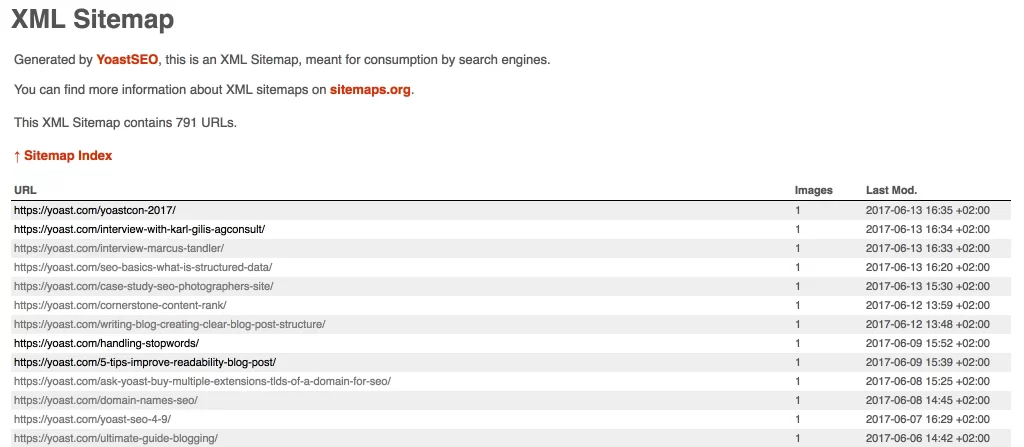
Actually, we find Shopify’s auto-sitemap perfectly reliable for most eCommerce stores, while WooCommerce users get more flexibility if they know how to configure it correctly.
5. 301 redirects & broken link handling
Shopify lets you create 301 redirects directly in the admin under “Navigation > URL Redirects,” and there are apps available to help manage them in bulk. However, Shopify doesn’t automatically detect broken links or suggest redirect paths.
WooCommerce, when paired with plugins like Redirection or Yoast Premium, offers more advanced redirect logic, including automation for deleted content and 404 logs; however, setup and maintenance are ultimately in your hands.
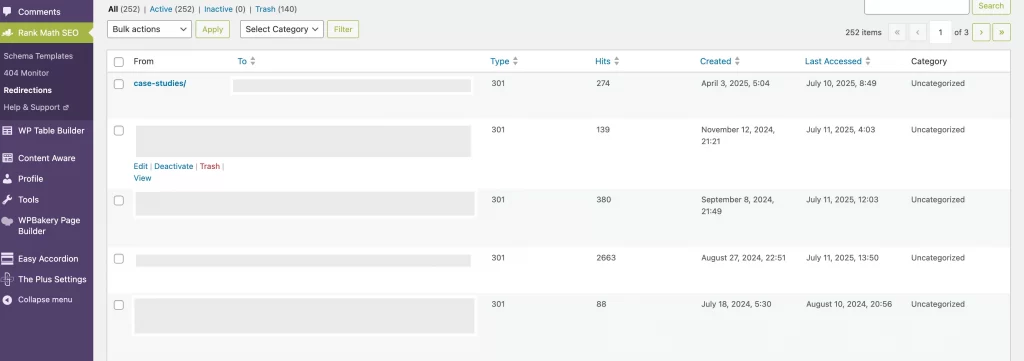
From our work at LitOS, we’ve found Shopify’s redirect system works well for stores with a clean product structure, while WooCommerce gives SEO teams more control, especially on large or content-rich sites.
Shopify vs WooCommerce Technical SEO Capabilities
Quick verdict: When comparing WooCommerce vs Shopify SEO in technical capabilities, WooCommerce offers more control across the board, but Shopify gives you just enough to rank well, without the risk of breaking your own SEO.
1. Control over meta data, URLs, canonicals
Shopify allows you to edit basic SEO fields, such as page titles, meta descriptions, and alt text, directly in the admin. Canonical tags are auto-generated to avoid duplicate content, and URL slugs are editable, but you can’t change the base structure (e.g., /products/, /collections/ will always remain).
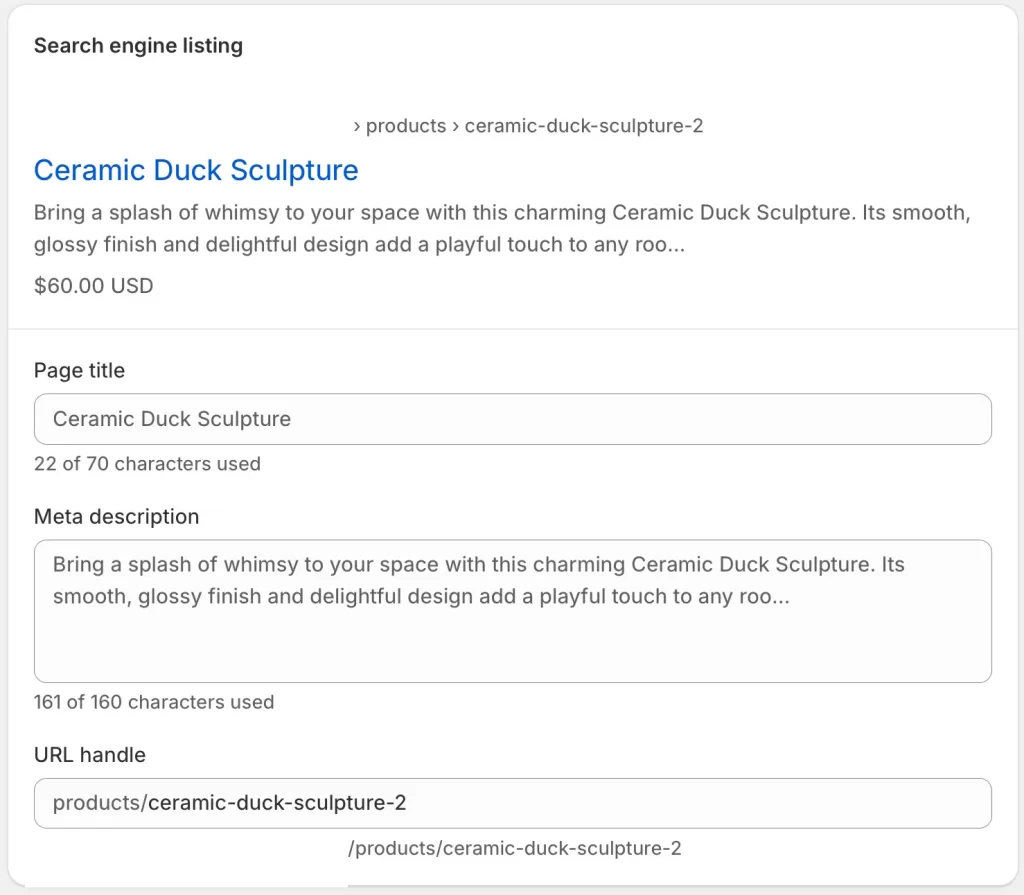
This creates a predictable system that’s hard to mess up, but also hard to deeply customize. For most Shopify merchants, it’s more than enough and avoids the SEO issues we often see in self-managed WooCommerce setups.
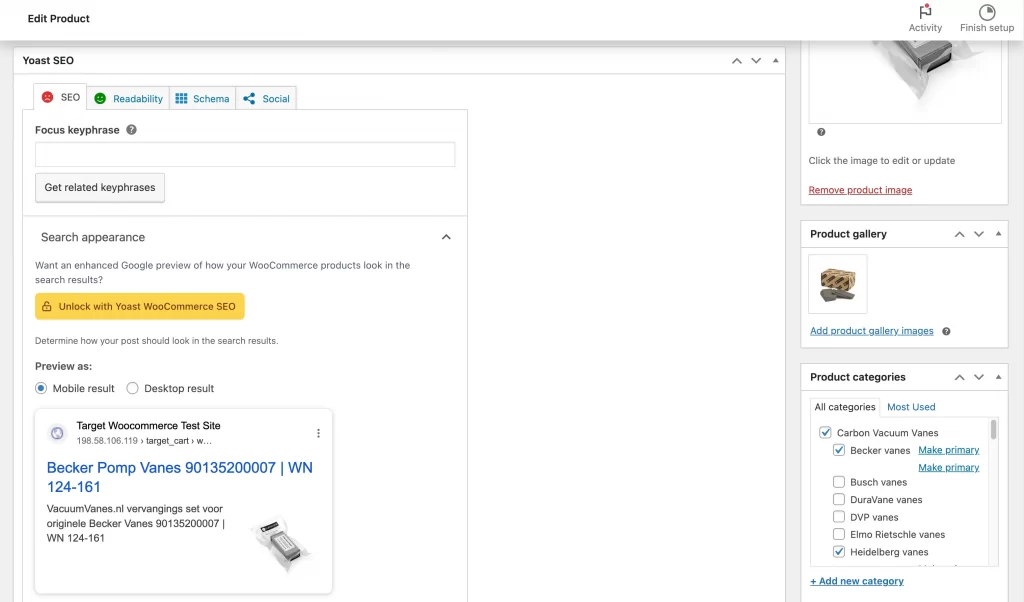
In contrast, WooCommerce offers complete control over technical SEO. You can customize every URL structure, from permalinks to category bases, and fully manage metadata, canonical tags, and indexation rules through plugins like Yoast SEO or Rank Math. You can even rewrite taxonomy URLs and remove unnecessary URL fragments entirely.
2. Structured data & schema markup
Most Shopify themes include built-in Product schema and Breadcrumb schema, and some premium themes support Review and FAQ schema too.
Note: For Shopify there are also many apps that can add reviews and support review schema, read more at How to Add Reviews on Shopify within 4 Steps.
You can expand schema coverage by editing theme files (Liquid templates) or using apps like JSON-LD for SEO but there’s no central UI for managing markup. Still, for product-based stores, Shopify’s defaults are enough to win Rich Results with minimal setup.
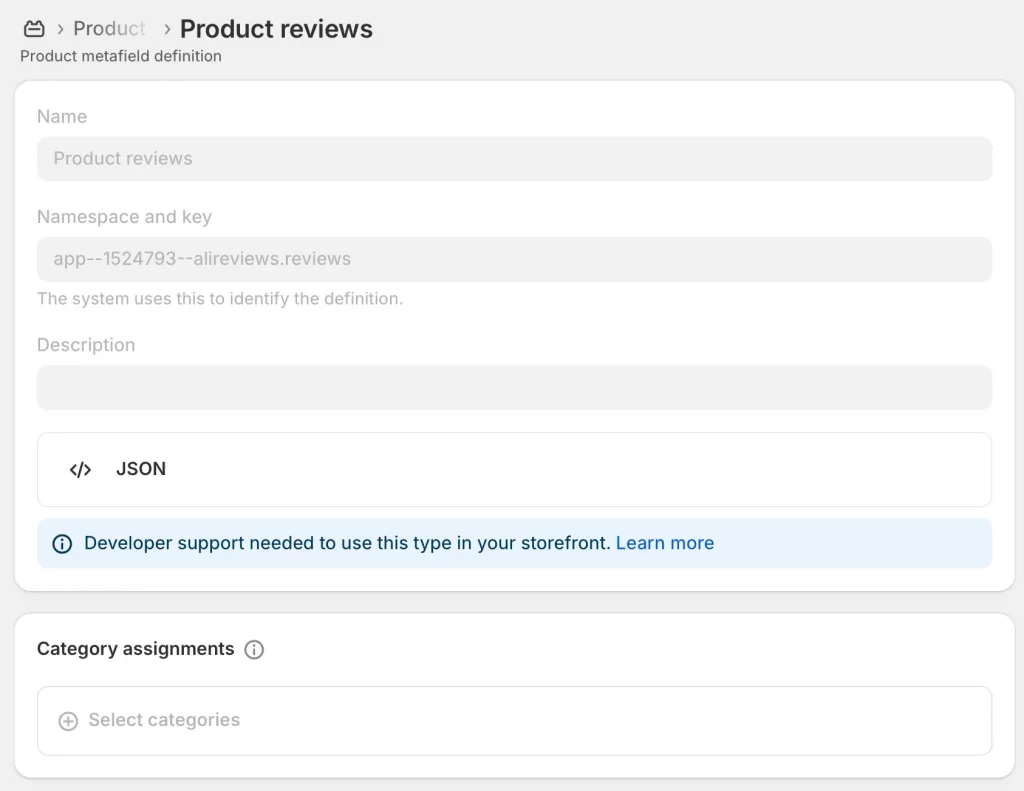
With the introduction of Sidekick AI, Shopify now helps merchants auto-generate structured content like FAQ sections and product meta, a helpful feature for those without technical SEO expertise.
WooCommerce runs on WordPress, so your schema options are nearly unlimited. You can define custom structured data with plugins or write your own JSON-LD markup. This is great for blogs, local SEO, or niche schema types (like HowTo, Recipe, Event). But again, with flexibility comes plugin weight and a risk of conflicts or bad markup if you don’t validate carefully.
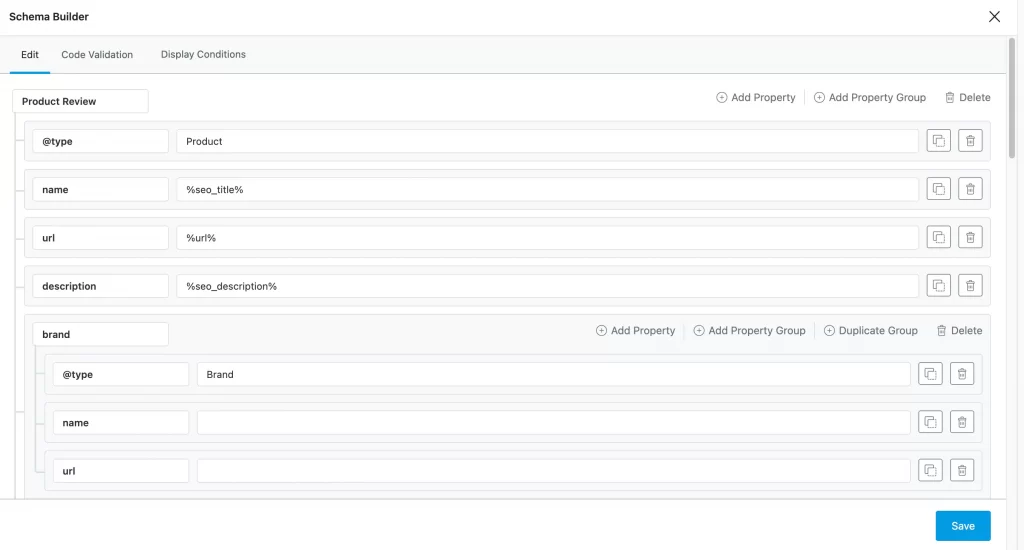
But WooCommerce’s plugin ecosystem now includes AI-enhanced tools like GetGenie AI and Rank Math Pro, making schema markup and structured data management more accessible than ever.
3. Robots.txt and indexing settings
Shopify now allows limited editing of the robots.txt file via theme code, and you can use apps or metafields to control noindex on certain pages. That said, it’s not something most users manage day-to-day, and Shopify prefers to keep this locked down to avoid SEO mistakes. For typical eCommerce setups, this works. But if you need to control what search engines crawl, index, or ignore in bulk, you’ll need help from your dev team.
When comparing Shopify vs WooCommerce SEO, in contrast, WooCommerce gives you full control. By using Yoast or similar tools, you can set noindex tags, control sitemap behavior, and edit robots.txt directly in your admin. That freedom is great, as long as it’s managed properly. We’ve worked with WooCommerce stores that unintentionally blocked entire sections from indexing due to a misconfigured setting.
Blogging & Content Marketing Features
Quick verdict: WooCommerce (via WordPress) is the clear winner for content-driven SEO, but Shopify can still support a strong blog strategy if you keep things focused and well-structured.
1. Blogging UX and SEO tools
Shopify includes a built-in blogging engine that is clean, minimal, and functional for basic content needs. You can write posts, add featured images, and optimize meta titles and descriptions. However, it lacks advanced features such as content scheduling, multi-author support, and native category pages.

Shopify’s 2025 improvements to the modular block editor make it easier to structure content with SEO in mind, like optimized headings, drag-and-drop sections, and reusable content blocks with clean HTML markup.
When comparing Shopify vs WooCommerce SEO, WooCommerce, built on WordPress, is on a completely different level. You get a full-fledged CMS with powerful blog management, visual editors, media libraries, post formats, revisions, and a vast range of SEO tools through plugins.
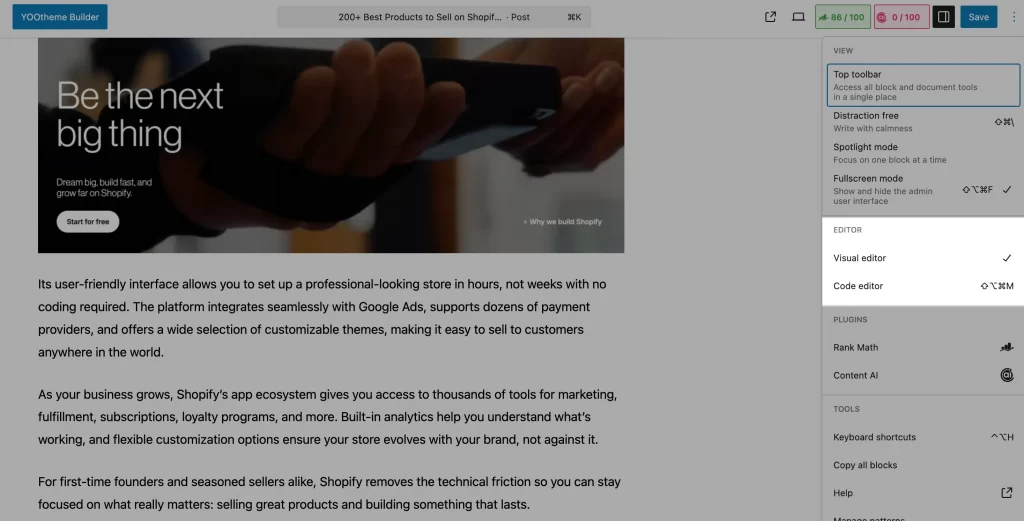
Content teams can schedule articles, optimize at scale, and run full editorial workflows without needing to write a single line of code.
2. Tagging, categories, content structure
Shopify blogs use simple tagging, but don’t support nested categories or hierarchical content structures. There’s no built-in blog search, and all blog posts live under a single /blogs/ path which limits flexibility for content hubs or SEO silos. You can work around this with custom theme development or blog-specific apps, but it’s not an intuitive solution.
WordPress (and WooCommerce by extension) gives you full control over post types, custom taxonomies, categories, and content hierarchies. You can build blog silos, create separate content clusters by topic, and structure internal linking in highly strategic ways. From a pure content SEO perspective, WooCommerce is far more scalable, but again, that flexibility assumes you have the content strategy (and resources) to use it properly.
Shopify vs WooCommerce SEO Extensions (Apps & Plugins)
Quick verdict: Shopify offers simplicity and ease of use through curated SEO apps, while WooCommerce provides deeper control through powerful plugins, but also demands more technical oversight.
1. Shopify SEO apps
Shopify’s App Store offers a diverse range of SEO tools, from one-click optimizers to more comprehensive suites. Popular options like Plug in SEO, Smart SEO, and JSON-LD for SEO help with structured data, meta tag templates, sitemap management, and image alt text optimization. Most apps are beginner-friendly and integrate directly into the Shopify admin. However, many key features (like bulk editing, broken link detection, or multilingual SEO) are gated behind paid plans.
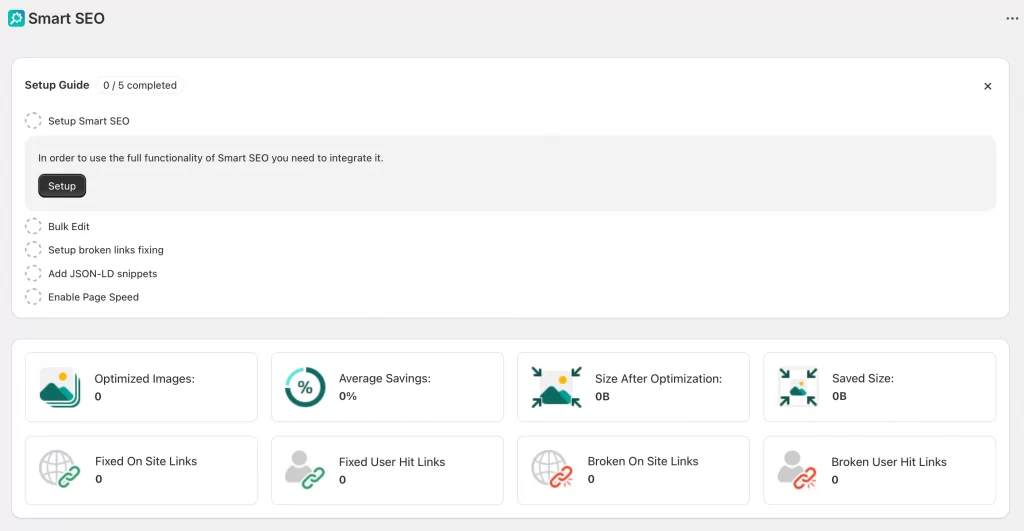
The upside is simplicity: no plugin conflicts, no messy configuration: just install, adjust, and go. The downside is cost over time and limited extensibility. From the LitOS lens, Shopify apps cover 80% of what most stores need if comparing Shopify vs WooCommerce SEO. For advanced use cases, we often combine apps with theme-level custom edits or metafield-driven SEO logic.
2. WooCommerce SEO plugins
WooCommerce, being part of the WordPress ecosystem, has access to the most powerful SEO plugins on the market, especially Yoast SEO, Rank Math, and All in One SEO. These tools offer complete control over schema, redirects, breadcrumbs, content analysis, and sitemap logic. You can define SEO rules for every post type, automate internal linking, and even add SEO scoring for your editorial team.
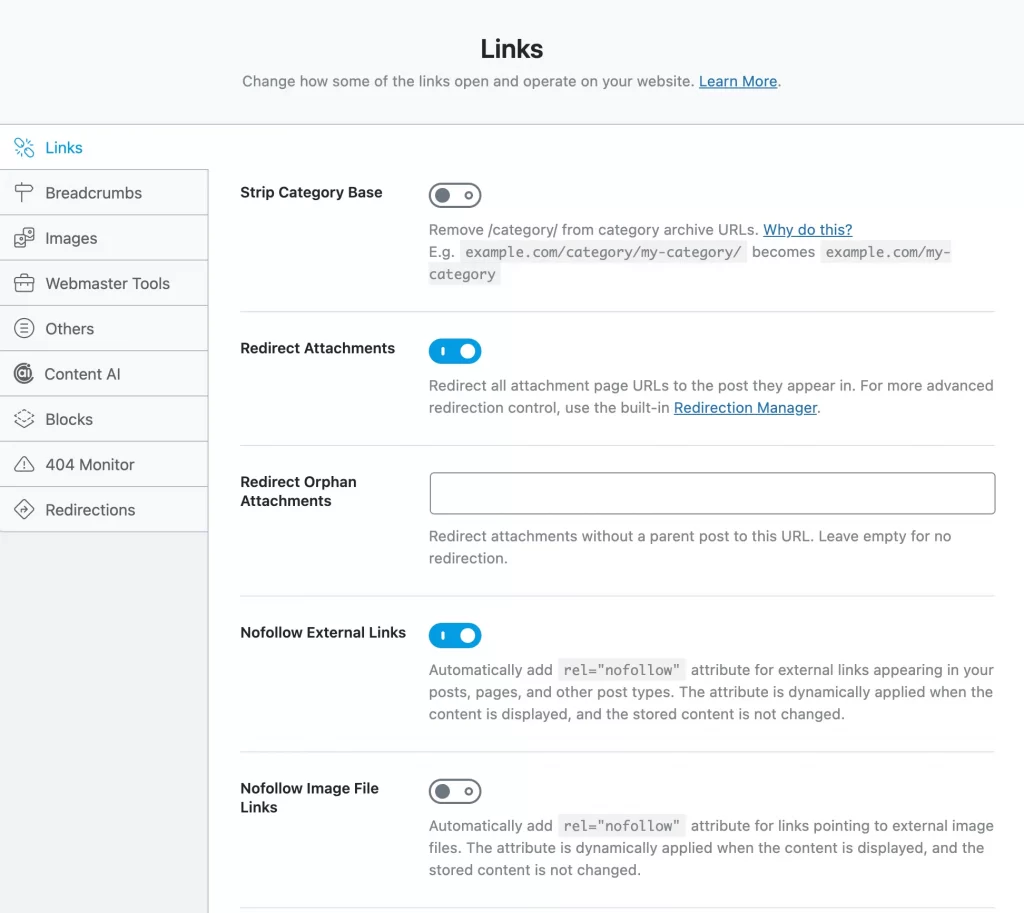
That power comes with a learning curve. You’ll need to understand plugin configurations, compatibility with other tools, and how to maintain performance. It’s easy to overload your site with too many overlapping plugins, which is something we frequently help clients clean up at LitOS. But for content-heavy or technically complex stores, WooCommerce’s plugin ecosystem is hard to beat.
Rank Math and SEOPress now offer AI-assisted meta generation, internal link suggestions, and one-click schema setups, helping WooCommerce merchants stay ahead of SEO trends with less manual work.
Shopify vs WooCommerce Cost of SEO Implementation
Quick verdict: Shopify offers simpler, app-driven SEO with predictable pricing; WooCommerce gives you more for free, but real optimization often costs more in time, setup, and maintenance.
Since we’re talking about numbers, let’s have a different approach here by looking at the table below on Shopify vs WooCommerce SEO cost.
| Cost factor | Shopify | WooCommerce |
| Platform cost | From $39/month (Basic plan) | Free (WooCommerce plugin) |
| Hosting | Included with Shopify | $30–$100+/month for quality managed hosting |
| SSL certificate | Included | Often included via host, may require manual setup |
| SEO apps/plugins | $5–$30/month per app | Free options (Yoast, Rank Math), premium $59+/year |
| Redirect management | Native + apps ($5–$15/month for advanced tools) | Free with Redirection plugin |
| Structured data / schema | Often requires paid app or theme edits | Included in SEO plugins (free or pro) |
| Technical SEO customization | Requires dev work or metafield setup | Plugin-based + manual control available |
| Developer/agency support | Typically project-based or retainer (optional) | Often needed for performance, caching, and plugin tuning |
| Total monthly estimate (starter) | ~$50–$80/month (platform + apps) | ~$30–$60/month (hosting + optional plugin upgrades) |
| Total monthly estimate (scaling) | ~$100–$200/month (apps + dev support) | ~$100–$200/month (hosting + plugins + dev tuning) |
As you can see, Shopify costs are more transparent and easier to plan; you pay for convenience. Thanks to features like Sidekick AI and enhanced SEO audit tools, many stores can now handle basic SEO tasks in-house, reducing the need for external apps or developer support.
WooCommerce initially appears cheaper, but its true cost can rise once performance, plugin conflicts, and maintenance issues arise, especially if scaling is done without a dedicated team.
WooCommerce vs Shopify SEO: Which Platform Is Right for Your SEO Goals?
There’s no one-size-fits-all answer but there is a right fit for your goals, skills, and content strategy when comparing Shopify SEO vs WooCommerce SEO. Here’s how we frame it at LitOS:
1. Choose Shopify if you want to focus on growing your business without worrying about technical SEO maintenance. It’s ideal for merchants who care about ranking well, but don’t have time (or in-house expertise) to manage hosting, plugins, or custom SEO logic.
2. Choose WooCommerce if content is core to your strategy. If you’re planning to drive long-term traffic through blogging, authority-building, or a siloed content structure, and you have the resources to manage WordPress, WooCommerce gives you the control you’ll need.
At LitOS, we work and understand with both platforms, but we often recommend Shopify for brands that want predictable SEO performance, faster launch timelines, and fewer surprises down the line. For WooCommerce, success often depends on how well you manage the moving parts.
Shopify vs WooCommerce SEO: FAQs
Is Shopify or WooCommerce better for SEO?
Both platforms can rank well, and the difference lies in control and complexity. Shopify handles SEO basics automatically and is easier to maintain, while WooCommerce provides full control but requires more technical expertise. Shopify is the better choice for most eCommerce-first businesses; WooCommerce is stronger for content-heavy or SEO-led strategies.
Does WooCommerce have good SEO?
Yes, WooCommerce has excellent SEO potential, particularly since it is built on WordPress. With plugins like Yoast or Rank Math, you can customize nearly every technical SEO element. But it’s only “good” if you set it up properly. Poor hosting, plugin conflicts, or misconfigured settings can significantly impact performance.
Which SEO plugin is best for WooCommerce?
Both Yoast SEO and Rank Math are top choices for SEO. Rank Math tends to offer more features for free and has a cleaner UI, while Yoast has a longer track record and extensive documentation. Either one can power a strong SEO strategy, as long as it’s configured correctly.
Is Shopify SEO ready?
Yes, Shopify is SEO-ready right out of the box. It includes mobile optimization, clean URLs, SSL, automatic sitemaps, and essential meta settings. While it doesn’t offer the same level of customization that WooCommerce does, most stores don’t require it. Apps and theme tweaks can cover any remaining gaps.
Should I switch from WooCommerce to Shopify (or vice versa)?
You should switch if your platform is holding you back. If managing performance, security, and plugins is distracting you from growth, Shopify may be a better fit for you. If you’ve outgrown Shopify’s content or technical limits and need full SEO control, WooCommerce might be worth the move, as long as you’re ready to manage the trade-offs.
Ready to Grow? Let’s Create Something Great Together!
All in all, in the Shopify vs WooCommerce SEO battle, the right platform depends on what you’re building, how you plan to grow, and how much complexity you’re willing to own.
Shopify offers simplicity, speed, and stability, making it an ideal choice for eCommerce brands focused on product SEO and sustainable growth. WooCommerce provides more control, especially for content-heavy strategies, but requires more time, tools, and technical expertise.
Let’s build what’s next!
At LitOS, we help ambitious brands grow smarter on Shopify – with better tech, sharper strategy, and hands-on support that actually drives results. From migration to growth, we make the process seamless and build to scale.
Have a project in mind? Contact us now →

